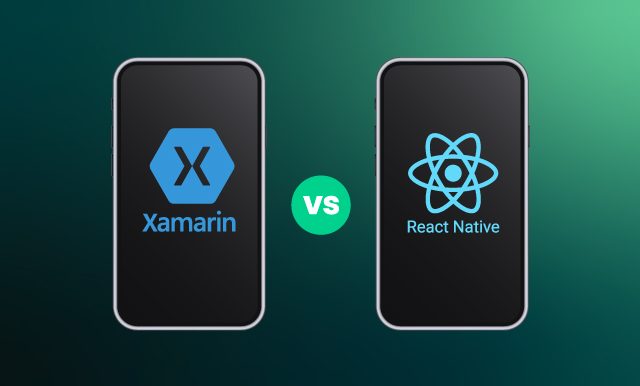Why use Node js? To answer this question, we will consider the words of Ken Williamson, a Node.js engineer and architect:
“MEAN stands for MongoDB, ExpressJS, AngularJS, and Node.js. Many industry experts believe the MEAN stack will be a dominant web development platform in the coming years.”
Indeed, a great part of software projects is based on these technologies. They all represent the JavaScript technology stack. To understand what makes them so special, let’s have a look at one of the four giants — Node.js. This article will reveal Node js pros and cons and explain what pitfalls it hides.
Node.js Overview
To be brief, Node.js is a free open-source server-side JavaScript environment that runs on the Google V8 engine. This cross-platform runtime environment allows programmers to convert JavaScript to machine code. It makes JavaScript a multipurpose language. If you hear about Node.js for the first time, we invite you to check out the video below.
Interestingly, the first attempts to create a server-side JavaScript environment were made by Netscape in 1996. Their technology was called LiveWire Pro Web, and it didn’t go viral. 13 years later, Ryan Dahl launched Node.js, which was supported on Mac OS X and Linux. Ryans’ decision to write Node.js was driven by his dissatisfaction with Apache HTTP Server, one of the most popular web servers of those times. Dahl criticized the inability of the webserver to handle multiple concurrent users and concurrent requests.
Node.js was designed for scalable development of web pages. Below, you can see the results of the study conducted 5 years after Node.js was created. In his research, Lei compared the ability of Node.js, Python, and PHP to handle multiple connections based on the Hello World example. He concluded that at the same number of users, Node js performance is much better compared to the two others.

When a new connection appears, Node.js fires a callback. When there are no connections, Node.js sleeps. This model is more effective than thread-based networking. The latter is also less efficient and more complicated to use.
Node.js is based on non-blocking asynchronous architecture, meaning that one block of JS code runs independently of another. It makes this environment asynchronous — a perfect choice for building scalable network applications. An event loop in Node.js is presented as a runtime environment. When Node.js finishes executing the input, it enters the event loop instead of using a specific start-the-event-loop call.
Node.js and “JavaScript Everywhere”
To better understand the pros and cons of Node JS, let’s review the JavaScript paradigm first. JavaScript is one of the most popular programming languages. Almost 70% of professional developers prefer JavaScript. They highlight the following benefits: a simple syntax, a dedicated and active community, and a great ecosystem. No wonder, JavaScript is everywhere, and this is what the paradigm implies.
Compared to other programming languages, JavaScript is pretty universal. The “JavaScript everywhere” idea presupposes that it will soon be impossible for a web developer not to come across this language. Using JavaScript, developers build web, desktop, and mobile apps, Node js APIs. Node.js is a part of the paradigm and one of the big three of JavaScript. React Native is used for mobile development, Electron — for desktop development, and Node.js — for server-side programming.
Node.js Usage
Node.js is the number one choice when it comes to web development. It powers at least 20 million websites worldwide. This is nearly 1.6% of websites globally. When you look at the historical trend of Node.js usage, you will see stable growth. Compared to November 2020, November 2021 shows a rise in demand.

Here are some quick facts that explain such a positive tendency:
- 85% of Node.js engineers use Node.js for web application development.
- Nearly 43% of Node.js programmers reported that they use it for building enterprise applications.
- Almost 67% of 2020 Developer Survey participants named Node.js the most loved tool of the year.
- The USA is the most popular country for Node.js development. Here, more than 40,000 websites run on Node.js.
An interesting tendency can also be seen in the graph below. The industry of Computers Electronics and Technology stands for 7.11% of Node.js use. Meantime, other industries, such as retail, e-commerce, education, logistics, etc. are using Node.js at 83.85% rate.

What Node.js Is Used for?
Node.js is usually used for building solutions that need a continuous server-browser connection. Here are the most common cases of its use:
- Real-time applications, tools, and chats
Node.js is used for building real-time apps of any complexity. With its help, JavaScript developers (Node js) write server-side code, implement server-side operations, and push notifications.
- SPAs
Complex single-page apps (SPAs) are frequently built with Node.js. The technology gives software professionals the chance to combine dynamic content with the delivery of static files.
- Node.js microservices architecture
This technology allows software developers to create a service-oriented Node js architecture. With Node js, they can build performant applications that involve a combination of unique APIs (Application Programming Interface).
- IoT apps
One of the Node js advantages is that it does not require a lot of memory and resources on the server-side. Thus, software experts use it for IoT development to enable concurrence connections across multiple devices.
Node.js in Practice: Some Famous Examples
Many world-known websites run on Node.js. Their examples can help you understand when to use Node js. Let’s check some of them below:
Netflix
Netflix is a recognized American streaming service. Netflix’s website offers its users access to a big library of films and television series. A great part of the context is produced by Netflix itself. The company uses Node.js for building a user interface (UI). The Netflix team analyzed the advantages of using Node js and found out that it allows for modularity and speed. With Node.js implementation, the Netflix website has become nearly two times faster.
LinkedIn is a world-known social network for business communication and professional connections. With its help, people build better careers and find new job opportunities. In 2011, LinkedIn decided to move from Ruby on Rails to Node.js with the aim of website optimization. The initial decision was to partially optimize a mobile version of the website. But now, the mobile LinkedIn app runs entirely on Node.js.
PayPal
PayPal is one of the most secure platforms enabling users to make electronic transactions. PayPal financial technology operates in the majority of countries. It’s often treated as an alternative to traditional paper-based methods. PayPal also uses Node.js for user-side content. That’s because Node.js allows developers to build both client-side and server-side with a single programming language. It simplifies the development process and saves money.
NASA
As you might know, NASA is a US-based department that explores space and conducts research on space-related questions. The company also uses Node js microservices. This is an approach to software development in which the software is presented as a group of services. It allows for higher flexibility. With Node, Nasa also easily moved to the cloud-based solution.
This is only a small part of the list. A lot of other business giants recognize the power of Node.js and use it for enterprise purposes.

Node.js Pros and Cons
Now, we will reveal what benefits of using Node js you can get and what drawbacks it hides.
Node js Benefits
So why are all the mentioned companies using Node.js services and what stands behind Node.js popularity? It seems that every technology has its strong and weak sides. Each of them can ensure speed and performance under particular circumstances. However, when it comes to Node.js, its efficiency and speed are strengthened by flexibility. This characteristic allows Node.js developers to reach high performance regardless of the project specifics.
Node.js is a part of the powerful ecosystem
Node.js is a part of the JavaScript ecosystem. Before Dahl created this runtime, the JavaScript programming language was mainly used for UI manipulations and animations. The development of Node.js gave a start to the formation of the complex JavaScript tech stack.
A Node.js primary package manager, npm, comprises more than 800 000 libraries and reusable templates. Every week, nearly 10 000 new libraries are added to Node package manager, which also improves the technology. In 2015, Node.js supporters and investors created the Node.js Foundation. The most famous members include PayPal, Microsoft, SAP, and IBM.
Node.js is highly scalable
When talking about the benefits, we have to mention Node.js scalability. This runtime can handle multiple connections and prioritize the requests with a slower response time. It speeds up the Node.js performance and the development of a software solution. The event-based and non-blocking nature of Node.js allows for an unlimited number of nods that can be added to the main programming function.

This technology allows developers to scale their solutions both vertically and horizontally. From the business perspective, it allows vendors to extend the functionality of their software, enriching it with additional resources and adding new capability paths. Moreover, Node.js has a good caching module. It powerfully caches data, increasing the efficiency of your solution. The scalability of Node js makes this technology a favorable option for conventional software projects.
Node.js has a vibrant open-source community
The open-source community appreciates the opportunity to access a wide range of free tools in just a few clicks. This is why they regularly make their contribution to improve this technology. Node.js developers make use of various tools and means of increasing the development speed.
Node.js community includes thousands of developers across the globe helping each other and sharing reusable JavaScript code. By hiring a Node js engineer, you reduce the development time. Node.js also enjoys the support of the leading corporations, which we talked about earlier.
Node.js keeps things simple
Node.js is a lightweight runtime environment. The latest version of Node.js 17.0.1, which includes 8.1.0 nmp, will take only 25.4 MB of space for Windows. Node js web app development allows software experts to build the same functionality with less effort.
Secondly, developers learn Node js because they want to use one language for frontend and backend development. This runtime is easily mastered by software engineers who know JavaScript. Node.js discussions are popular on GitHub, and they easily find answers to their questions. So if you find an experienced Node.js partner, you ensure that both the client-side and server-side of your web app will work well.
Node.js is a good choice for dynamic web development
Node.js uses JSON without converting between binary models. The runtime applies JavaScript for JSON, which forms the ground for seamless communication. Effective data transfer, in turn, leads to many other benefits of Node js. These include fast performance and speed, responsiveness, flexibility, and efficiency.
The study tested the viability of Node.js in a time of fast-performing and modern solutions. As the result shows, not only is Node.js viable, but it also significantly outperforms its competitors. Node js demonstrates effective resource utilization and an ability to handle dynamic content.
What Else Should You Know About Node.js?
Here is the other side of the coin that explains why Node.js is bad for certain kinds of projects. Let’s check the drawbacks and risks of using Node.js.
Nested callback issue
While working with Node.js, developers have to avoid running multiple queued tasks in the background. Otherwise, they will face the risk of falling into callback hell. A callback is a function that runs when Node.js finishes some task in a queue. If there are too many callbacks in the background, they get nested too deep and lead to the so-called callback hell. Such a situation makes code difficult to understand and maintain.
This is because of the asynchronous programming model of Node.js. However, callback hell happens mostly because a developer uses unclean code or lacks experience. Thus, the best way to avoid such situations is to hire a Node.js development partner who works only with clean code and knows how to simplify or refactor it.
Processing CPU-intensive requests
When it comes to intensive computation tasks, Node.js doesn’t perform that well. We have talked about the principles under which Node.js prioritizes incoming requests. Yet, the described effectiveness does not refer to CPU-bound tasks and requests.
When Node.js receives an intensive computation task, it immediately gives it a number-one priority. Being heavy in nature, CPU-intensive tasks slow down the work of the runtime. This is why Node.js is not the best choice for solutions requiring heavy computations.
However, in 2018, the so-called worker threads module was introduced. It allows for multithreading in Node.js, enabling the runtime environment to carry heavy CPU tasks. The module enables developers to run multiple threads and perform code execution in parallel.
Duplication of the ecosystem effort
In terms of the ecosystem contributions, there is much quantity and not that much quality. JS developers often struggle with choosing the best package among the thousands of options available. Moreover, not all of the presented packages are of high quality.
Do not worry about the quality of the basic Node.js — it is maintained by its creators. When it comes to the quality of additional tools and components, they frequently do not meet the code quality standards. However, this disadvantage will not affect your web application if you choose a reliable Node.js development company. The JS development company of your choice has to have year-long experience and knowledge of the best practices of Node development.
Is Node.js the Right Choice for Your Project?
In this article, we have analyzed Node.js advantages and disadvantages and answered the question “Why use Node.js?” As you see, there are numerous benefits of Node.js web app development but it is not a one-size-fits-all solution. Still, it is the best choice for building scalable and dynamic software products.
If your project is targeted at a wide audience and you are going to scale your business up, this technology will help you reach your goals. Moreover, if you expect your potential solution to process multiple requests at the same time, you should also choose Node.js. With a reliable software development partner, you will be able to prevent situations when your website is down and you lose clients.

Our Engineers
Can Help
Are you ready to discover all benefits of running a business in the digital era?

Our Engineers
Can Help
Are you ready to discover all benefits of running a business in the digital era?








